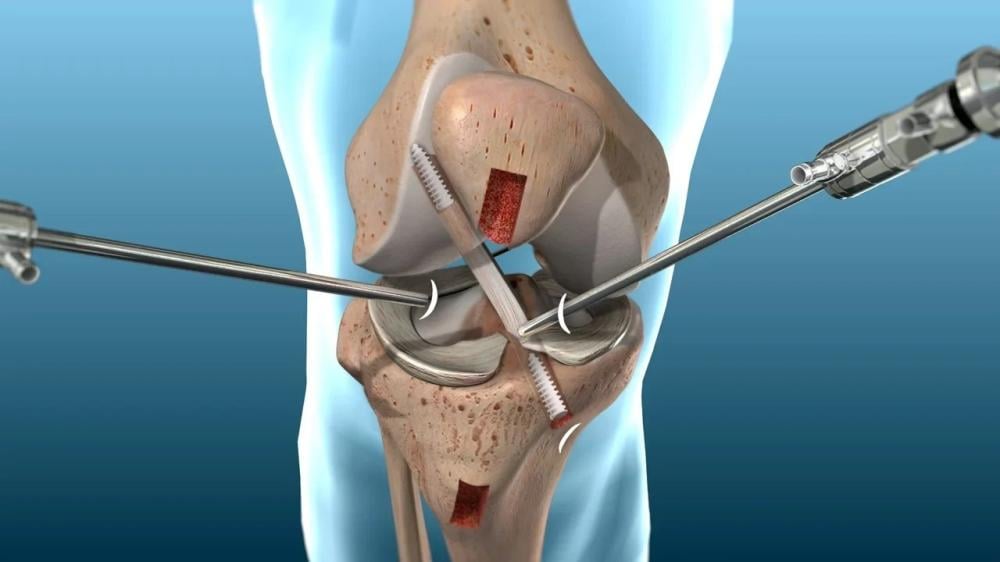Introduction
Anterior cruciate ligament (ACL) injuries are common among athletes and physically active individuals, and often require surgery to reattach the torn ligament. The surgery is followed by a rehabilitation program that includes exercises and strategies to speed up recovery and improve knee function. One of the strategies used in rehabilitation is cold water therapy or cryotherapy, which works to relieve pain and reduce inflammation, which contributes to improving recovery after surgery.
Research objectives
This research aims to:
Understand the mechanism of action of cold water immersion in reducing inflammation and pain.
Elucidate the role of cold water therapy in accelerating recovery after cruciate ligament surgeries.
Provide recommendations to practitioners and patients on how to benefit from cold water therapy after surgery.
Benefits of cold water immersion after cruciate ligament surgery
1. Reducing inflammation
Inflammation is a natural response of the body after surgery, but it can be painful and restrict movement. Cold water helps constrict blood vessels, which reduces blood flow to the injured area, thus reducing swelling and inflammation. Numerous studies have shown that postoperative cryotherapy can significantly reduce swelling and inflammation, which can help reduce pain and improve patient comfort.
Source:
Bleakley, C. M., Davison, G. W. (2010). What is the biochemical and physiological rationale for using cold water immersion in sports recovery? A systematic review. Sports Medicine, 40(6), 539-549.
2. Pain relief
Cold water acts as a natural pain reliever by cooling the nerves surrounding the affected area, reducing the activity of nerve signals responsible for the sensation of pain. Research has shown that cold water therapy can be an effective way to reduce pain after surgery, reducing the patient’s need for medication painkillers that can have side effects.
Source:
Swenson, C., Sward, L., & Karlsson, J. (1996). Cryotherapy in sports medicine. Scandinavian Journal of Medicine & Science in Sports, 6(4), 193-200.
3. Improved circulation
After a period of cold water immersion, blood vessels dilate and blood flow increases, which helps speed up the healing process. This increased flow delivers more oxygen and nutrients to the affected tissues, which helps speed up the healing process.
Source:
Tipton, M. J., & Collier, N. (2013). Cold water immersion: kill or cure? Experimental Physiology, 98(5), 1-17.
4. Improved mobility and flexibility
After reducing inflammation and relieving pain, the patient can regain joint flexibility more quickly. Cold water therapy facilitates rehabilitative exercises and improves range of motion, which enhances the rehabilitation process and enables the patient to return to normal activities more quickly.
Source:
Vaile, J., Gill, N., Blazevich, A., & Carlson, J. (2007). The effect of contrast water therapy on symptoms of delayed onset muscle soreness. Journal of Strength and Conditioning Research, 21(3), 678-682.
5. Reducing muscle tension
Cold water helps relax the muscles surrounding the joint, which reduces muscle tension. Muscle tension is a factor that can cause joint stiffness, especially after surgery. Therefore, the relaxation resulting from cold water therapy contributes to improving joint flexibility and mobility.
Source:
Ihsan, M., Watson, G., & Abbiss, C. R. (2016). What are the physiological mechanisms for post-exercise cold water immersion in athletes? A systematic review. Sports Medicine, 46(8), 1095-1112.
Methods and recommendations for using cold water immersion
Ideal duration
Studies indicate that the duration of cold water immersion should be between 10 and 15 minutes for best results, as this is sufficient to numb the nerves and reduce swelling without causing other tissue damage.
Proper Temperature
It is recommended that the water temperature be between 10 and 15 degrees Celsius. Very low temperatures may cause tissue damage, while high temperatures may not give the desired results.
Conclusion
Cold water therapy is an effective tool for improving the recovery process after ACL surgery. By reducing inflammation, relieving pain, and enhancing blood circulation, cold water immersion can speed up the patient's recovery from physical function and help them return to their daily activities. It is important for patients and healthcare providers to follow the recommended guidelines for the duration and temperature of immersion to achieve the maximum benefit from this treatment.
References
Bleakley, C. M., & Davison, G. W. (2010). What is the biochemical and physiological rationale for using cold water immersion in sports recovery? A systematic review. Sports Medicine, 40(6), 539-549.
Swenson, C., Sward, L., & Karlsson, J. (1996). Cryotherapy in sports medicine. Scandinavian Journal of Medicine & Science in Sports, 6(4), 193-200.
Tipton, M. J., & Collier, N. (2013). Cold water immersion: kill or cure? Experimental Physiology, 98(5), 1-17.
Vaile, J., Gill, N., Blazevich, A., & Carlson, J. (2007). The effect of contrast water therapy on symptoms of delayed onset muscle soreness. Journal of Strength and Conditioning Research, 21(3), 678-682.
Ihsan, M., Watson, G., & Abbiss, C. R. (2016). What are the physiological mechanisms for post-exercise cold water immersion in athletes? A systematic review. Sports Medicine, 46(8), 1095-1112.

